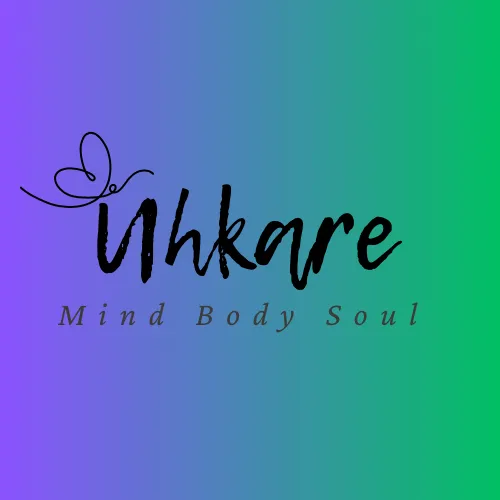
How Breath Shapes the Brain and Regulates Your Nervous System | Uhkare Blog
How Does Breath Shape the Brain and Regulate Your Nervous System?
Take a slow breath in. Fill your lungs. And exhale all the way out.
Notice how your body responds — without you forcing anything:
your shoulders drop,
your jaw softens,
your mind stops gripping.
This is not accidental.
This is the nervous system answering a signal — one you can learn to guide with precision.
At Uhkare Mind Body Soul, breath is not used as an escape.
It’s used as a pathway back into yourself — where clarity, capacity, and emotional steadiness become possible again.
As one client shared:
“Her sessions aren’t just breathwork. You don’t just breathe — you release, reset, and reconnect with a part of yourself you may have forgotten was still there.”
The Science: Breath as a Nervous System Messenger
Every breath you take sends instructions to your brain through the vagus nerve.
Your breath tells your system:
We’re safe.
We’re overwhelmed.
We need to protect.
We can open.
When your breath is:
Shallow and fast → the body prepares to defend (fight/flight).
Slow and deep → the body shifts into repair (rest/digest).
Steady and rhythmic → the heart and brain fall into coherence, the state where emotional clarity becomes possible.
Coherence is not calmness.
Coherence is inner stability.
It’s the moment where you can feel your feelings — without drowning in them.
How Breath Expands Capacity
Intentional breathwork helps:
Lower cortisol + reduce stress load
Expand your Window of Tolerance
Calm emotional reactivity
Strengthen decision-making and clarity
Rewire the nervous system through repetition and safety
One client described it this way:
“The work feels like a journey home to yourself. It’s soul work, not just breathwork.”
This is why breath is foundational in the Self-Regulation Heart Transformation Experience — because you cannot think your way into regulation.
Your body must experience safety first.
The Soul: Breath as Homecoming
Across cultures, breath has always been understood as more than oxygen.
It is life force, spirit, memory, truth moving through the body.
When you breathe with intention:
your intuition gets louder
your emotional charge releases instead of stores
your heart becomes easier to hear
As one client shared:
“I always leave sessions feeling lighter, clearer, and more at peace — as if something inside me finally had space to breathe.”
This work is not about learning to calm down.
It is about learning to return.
Try This Right Now
Heart-Focused Breathing
Hand on heart
Inhale 5 seconds
Exhale 5 seconds
Imagine the breath moving through your heart
60–90 seconds is enough to shift state.
Box Breathing (Reset Patterning)
Inhale 4
Hold 4
Exhale 4
Hold 4
Repeat 4–6 cycles.
These practices are simple — and they are rewiring tools.
Why Breath Is Central to Uhkare Mind Body Soul
Breath is the foundation of all the work we do:
In The Self-Regulation Heart Transformation Experience, breath retrains your baseline.
In The Wild Woman Collective, breath synchronizes the group into shared emotional safety — something far more powerful than processing alone.
As one woman said:
“This work has changed the way I relate to myself and others. I show up differently now — not because I’m trying, but because my nervous system finally knows how.”
This is transformation from the inside out.
Final Thoughts
Breath is the most ancient tool we possess — and one of the most scientifically validated for emotional healing and nervous system repair.
It shapes the brain.
It regulates the body.
It reconnects you to yourself.
If breath is calling — that’s your body asking for a new way of living.
🌿 If you’re ready to go deeper:
Join The Wild Woman Collective Newsletter for upcoming seasonal gatherings
Two pathways.
One return — to the place inside you that has always been whole.
FAQs About Breath, the Brain & Nervous System Regulation
1. How does breathing actually affect the brain?
Your breath speaks directly to your brain through the vagus nerve — the main communication line between body and mind.
Shallow, fast breathing tells the brain you are threatened → activating fight-or-flight.
Slow, intentional breathing tells the brain you are safe → activating rest, repair, and clarity.
In plain language:
Your breath tells your nervous system how to feel.
Change your breath, and your brain follows.
2. What is heart-brain coherence, and why does it matter?
Heart-brain coherence is when your breath, heart rhythm, and emotional centers fall into sync.
In coherence:
Emotions stabilize
Mental clarity improves
Intuition becomes more accessible
At Uhkare, we use HeartMath® biofeedback so you can see your coherence shift in real time — which helps your brain learn how peace feels in your body.
3. Can breathwork really rewire the nervous system?
Yes — and this is where the science gets powerful.
Intentional breathwork changes how your brain processes stress by:
Reducing amygdala activation (fear + reactivity)
Strengthening the prefrontal cortex (clarity + grounded decision-making)
Over time, your baseline shifts from bracing to responding.
This is how emotional resilience is built.
4. What’s the difference between breathwork and meditation?
Breathwork is active — you’re guiding your physiology.
Meditation is receptive — you’re observing your experience.
At Uhkare, we start with breathwork first, so the body is actually safe enough to be present.
Otherwise, meditation just becomes sitting with a stressed nervous system.
5. How does breath support emotional healing?
Emotions are physiological events, not ideas.
When we suppress them, the body holds the tension.
When we breathe with awareness, that emotional energy can move, release, and integrate.
You’re not bypassing your feelings.
You’re processing them through safety instead of force.
6. What are the best breathing practices to start with?
Start simple, consistent, and slow:
Heart-Focused Breathing:
Inhale 5 seconds / Exhale 5 seconds, imagining the breath moving through the heart.
Box Breathing (4-4-4-4):
Inhale 4 → Hold 4 → Exhale 4 → Hold 4.
2–3 minutes is enough to shift your state.
7. How is breath used inside the Self-Regulation Heart Transformation Experience?
Breath is the foundation of this 5-month journey.
You’ll learn:
Coherence practices
Somatic breath techniques
Biofeedback-based nervous system retraining
This isn’t “take a deep breath and relax.”
This is repatterning the baseline your body lives from.
8. What role does breath play in The Wild Woman Collective?
In circle, breath becomes a shared nervous system.
We begin with coherence breathing so the group:
Regulates together
Lands in presence
Learns through resonance, not performance
It’s primal, grounding, and deeply restorative — especially for women who have spent years carrying everything alone.
9. Can I practice breathwork if I have anxiety or trauma?
Yes — but gently.
The goal is steady, not intense.
If anxiety rises:
Slow the breath
Make the exhale longer than the inhale
Pause as needed
Trauma-informed breathwork meets your body where it is, not where you think it should be.
10. How do I build a daily breathwork practice?
Keep it simple:
2–3 minutes in the morning
2–3 minutes before transitions (work → home, task → rest, etc.)
The goal is not to feel calm all the time.
The goal is to teach your body that you don’t have to live in defense.
Consistency creates the shift.





